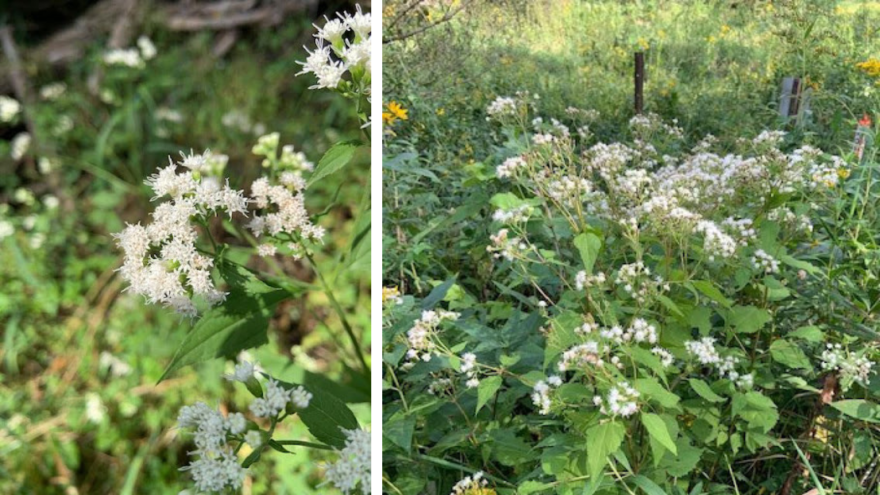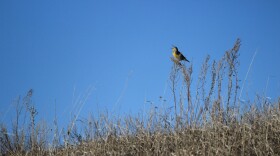Have you ever heard of milk sickness? It is caused by consuming contaminated milk containing a toxin from the white snakeroot plant (Ageratina altissima). I had not heard of the sickness or the plant until recently, assumedly because the sickness is rare to nonexistent, and the plant uncommon or rare and not widely distributed in North Dakota.
White snakeroot is a native short-lived perennial member of the aster family. Its native range is roughly eastward of a line from North Dakota to Texas. O.A. Stevens included the species it in his Handbook of North Dakota Plants. He noted it had been documented in Richland and Ransom counties. It has now also been documented in Cass, Grand Forks, and Trail counties. White snakeroot grows in moist to dry shaded areas, the edges of woods, and the like. It also appears to have a preference for the margins of disturbed wooded areas.
White snakeroot grows to maybe 3-4 feet high and is widely branched with many small white heads one or maybe two inches across on a flat headed panicle during late summer and early fall. Later in the fall it will be one of the last flowers to bloom along with the goldenrods. The long white styles make the heads quite attractive. The leaves are opposite, up to 4 inches or so long, broadly ovate with sharply pointed tips, ragged teeth, with the leaf stalk or petiole about as long as the leaf blade. The major veins on the underside of the leaves are generally hairy.
I was surprised to learn that this plant is toxic to cattle, and if consumed in sufficient quantities, the toxin (tremetol) can contaminate the milk and meat. If contaminated milk is consumed in sufficient quantities, humans can develop milk sickness which was often fatal to people in the Midwest during the 1800’s. Deaths have been estimated to have been in the hundreds of thousands. And milk sickness may have taken the life Abraham Lincoln’s mother, Nancy Hanks Lincoln.
So be on the lookout for this interesting plant, particularly if you are in woodland margins in the eastern part of the state.





